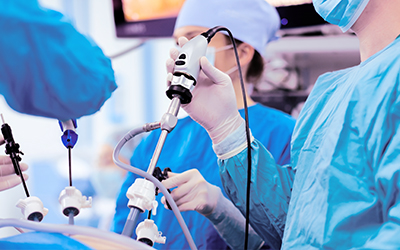Laparoscopy / Hysteroscopy
Laparoscopy and Hysteroscopy may be recommended to the patient for infertility care, depending on the patient’s requirement. These techniques help in examining and discovering problems that cannot be discovered with an external examination. Laparoscopy and Hysteroscopy can be done for both diagnostic or operative purposes.

Laparoscopy
Diagnostic Laparoscopy is performed under general anesthesia. A telescope is placed through the navel. CO2 is filled in the abdomen to prevent any damage to the organs. This diagnosis is used to discover gynecological problems including endometriosis, uterine fibroids and other structural abnormalities, ovarian cysts, adhesions (scar tissue), and ectopic pregnancy.
Operative Laparoscopy can be performed in the same way, additional instruments (probes, scissors, grasping instruments, laser instruments) are inserted. It is done to remove diseased ovaries and damaged fallopian tubes.
Hysteroscopy
Diagnostic Hysteroscopy is done to the patient if they have any recurrent miscarriages or abnormal uterine bleeding. The uterine cavity of the patient is examined to see if there are fibroids protruding into the uterine cavity, scarring, polyps, and congenital malformations. It is performed by slightly stretching the canal of the cervix with a series of dilators to temporarily increase the size of the opening. The hysteroscope (a long, thin, lighted, telescope-like instrument) is inserted through the cervix and into the uterus. CO2 gas or a fluid such as saline are then injected into the uterus through the hysteroscope. This gas or fluid expands the uterine cavity and enables the physician to directly view the internal structure of the uterus and reduces damage to the internal organs.
Operative Hysteroscopy can be performed in the same way by inserting a few instruments. It is performed to remove fibroids in the uterine cavity.


